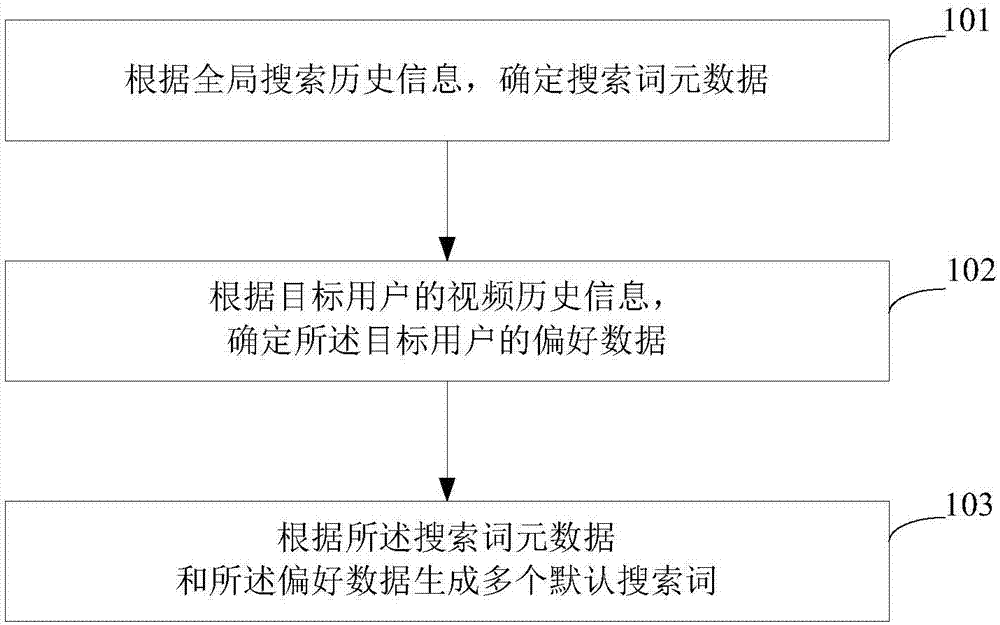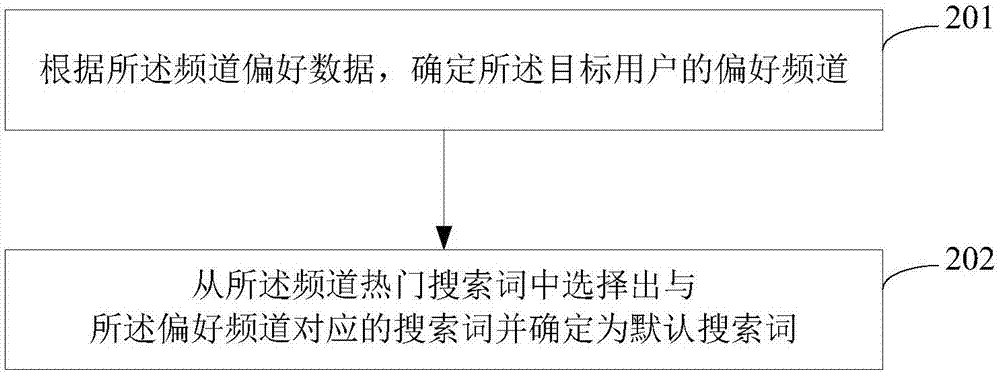Method and device for generating default search word
A technology for generating devices and search words, applied in the field of video search, can solve the problems of poor timeliness of default search words and inability to meet different search preferences of users, and achieve the effect of simplifying video search process, improving user experience, and high timeliness
- Summary
- Abstract
- Description
- Claims
- Application Information
AI Technical Summary
Problems solved by technology
Method used
Image
Examples
Embodiment Construction
[0051] The following will clearly and completely describe the technical solutions in the embodiments of the present invention with reference to the accompanying drawings in the embodiments of the present invention. Obviously, the described embodiments are only some, not all, embodiments of the present invention. Based on the embodiments of the present invention, all other embodiments obtained by persons of ordinary skill in the art without making creative efforts belong to the protection scope of the present invention.
[0052] Please refer to the attached figure 1 , is a flow chart of a method for generating a default search word disclosed in the present invention, such as figure 1 As shown, the method may include:
[0053] Step 101: Determine search word metadata according to global search history information;
[0054] According to the search history information of users on the whole network, the search word metadata can be determined. In this embodiment, the metadata may...
PUM
 Login to View More
Login to View More Abstract
Description
Claims
Application Information
 Login to View More
Login to View More - R&D
- Intellectual Property
- Life Sciences
- Materials
- Tech Scout
- Unparalleled Data Quality
- Higher Quality Content
- 60% Fewer Hallucinations
Browse by: Latest US Patents, China's latest patents, Technical Efficacy Thesaurus, Application Domain, Technology Topic, Popular Technical Reports.
© 2025 PatSnap. All rights reserved.Legal|Privacy policy|Modern Slavery Act Transparency Statement|Sitemap|About US| Contact US: help@patsnap.com



